Occupational Health and Safety Standards Support Tools
Before you start
These Standards Support Tools are based on content from specific Occupational Health and Safety standards. Please note that CSA Group always strives to provide up to date and accurate information. However, no representation or warranty, expressed or implied, is made that this information meets your specific needs, and any reliance on this information is at your own risk. Please Contact CSA Group for more information about our services.
Selection, Use, and Care of Respirators (1)
This tool is based on CAN/CSA-Z94.4-18, Selection, use, and care of respirators.
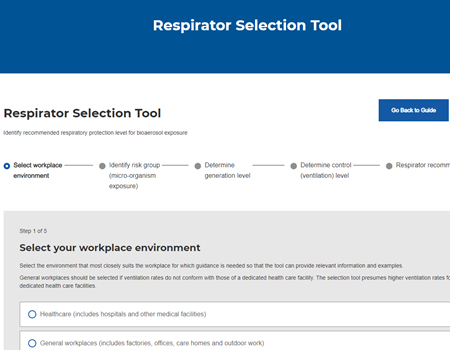
Respirator Selection Tool
This web-based tool supports the selection of respirators for protection from bioaerosols.
Occupational Health & Safety Management Systems (6)
These tools are based on CSA Z45001:19, Occupational health and safety management systems – Requirements with guidance for use.
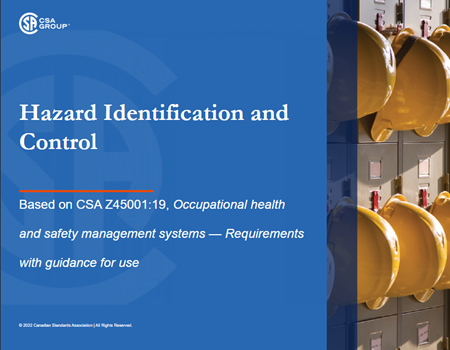
Hazard Identification and Control
Take this short, self-paced learning to assist in understanding how to identify and control workplace hazards.
Hazard Control Tracker
Use this editable tracking sheet as-is or adapt it to suit your organization’s needs for support in tracking hazards, controls, and review dates.
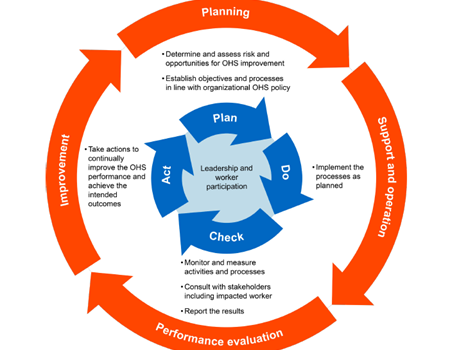
Plan-Do-Check-Act Infographic
Use the PDCA concept to help achieve continual improvement in your organization, programs, or projects. It is ready to print or be shared virtually.
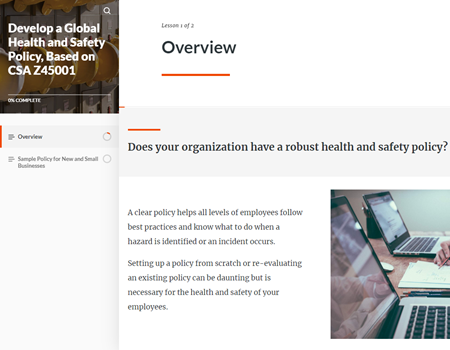
Health and Safety Policies
Take this short, self-paced learning to aid in identifying key points to consider when creating a health and safety policy for your organization.
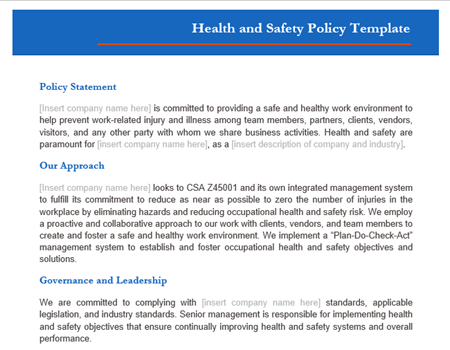
Health and Safety Policy Template
Use this editable policy template as a starting point to write or revise an OHS policy for your organization.
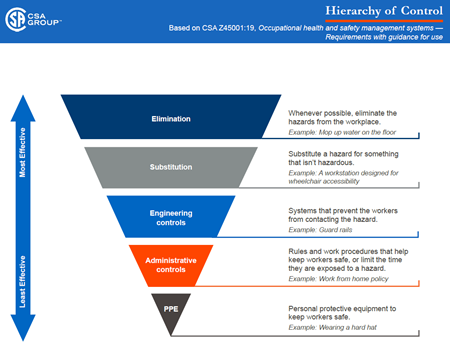
Hierarchy of Controls Infographic
Understand the purpose and effectiveness of the various levels of hazard control.
First Aid Kits for the Workplace (3)
These tools are based on CSA Z1220-17 (R2021), First aid kits for the workplace.
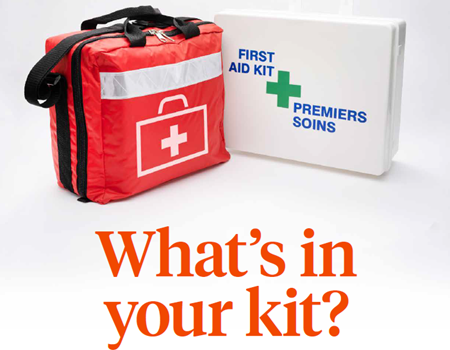
First Aid Kit Items
Create and maintain your first aid kits with this illustrated, easy-to-use guide, designed to help you know exactly what to look for and purchase.
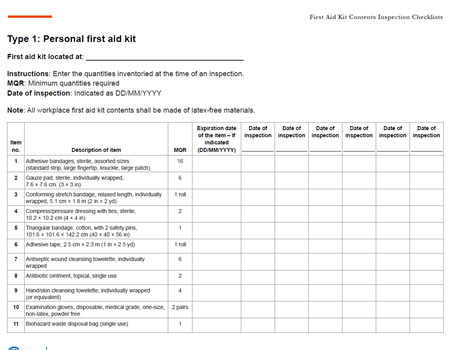
First Aid Kit Inspection Checklist
Use this checklist to help inspect the contents of your first aid kits and ensure you have the appropriate items and quantities needed for your business.
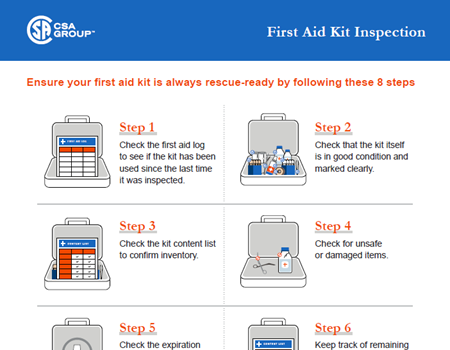
First Aid Kit Inspection Poster
Follow these 8 steps to guide your inspection of your first aid kits, ensuring they are always kept rescue-ready!
Office Ergonomics (6)
These tools are based on CSA Z412-17, Office ergonomics – An application standard for workplace ergonomics.
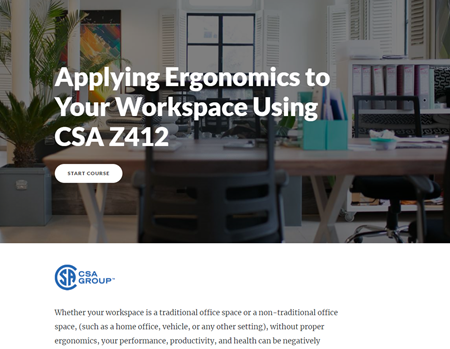
Apply Ergonomics to Your Workplace
This short, self-paced learning helps you to apply ergonomics to your workspace, which can positively impact your performance and health.
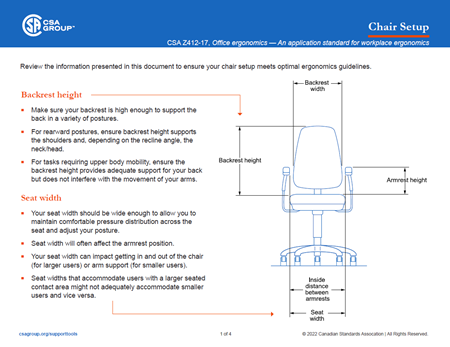
Chair Setup
Does your chair setup meet optimal ergonomics guidelines? This tool helps you evaluate your chair setup. Ensure you share it with others!
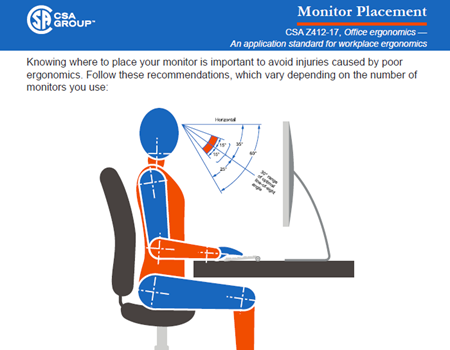
Monitor Placement
Use this tool to help you correctly place your monitor and reduce the chances of injuries caused by poor ergonomics.
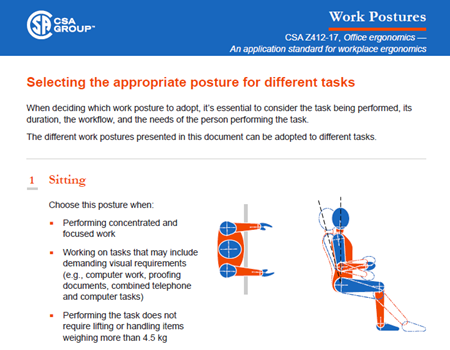
Select the Appropriate Posture for Different Tasks
Refer to the different work postures presented in this tool and select those that best suit the task you are performing.

Work Postures
Refer to the information presented in this guide to guide you in staying in control of your work posture and avoid injuries caused by poor ergonomics.
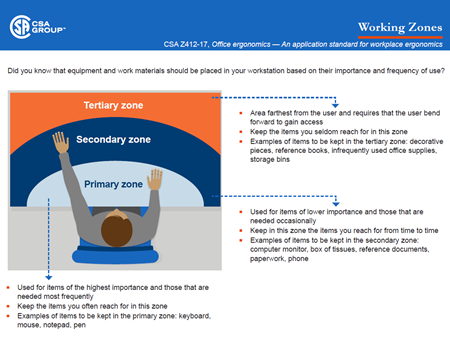
Working Zones
Use this tool to assist in learning how to place your equipment and work materials on your desk according to their importance and frequency of use.
Occupational Health and Safety Training (2)
These tools are based on CAN/CSA-Z1001-18 (R2022), Occupational health and safety training.
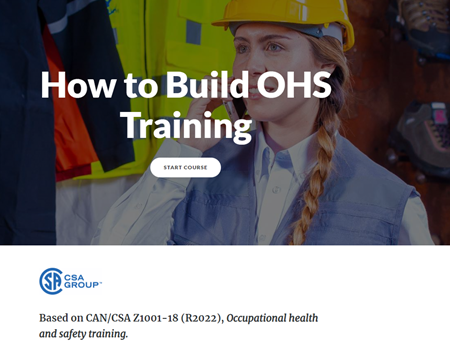
How to Build OHS Training
Take this short, self-paced learning on the basics of putting together effective health and safety training for your workers.
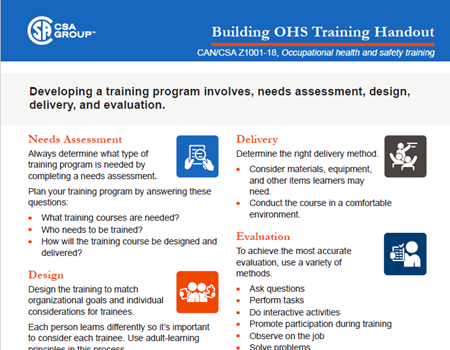
Building OHS Training Handout
Refer to this handout for the key considerations when building OHS training.
Workplace Incident Investigation (13)
These tools are based on CSA Z1005:21, Workplace incident investigation.
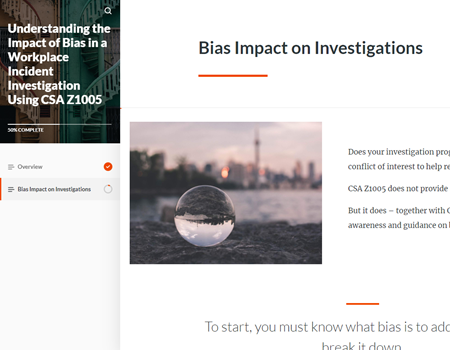
Understanding the Impact of Bias in Workplace Incident Investigations
Take this short, self-paced learning to help ensure successful outcomes of workplace incident investigations through the mitigation of bias.
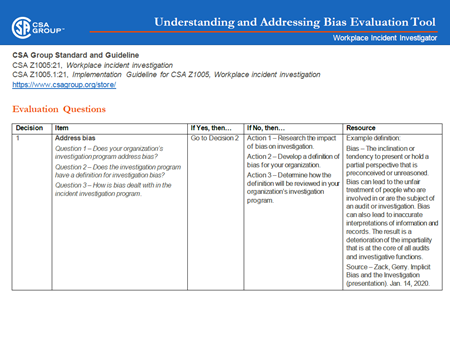
Understanding and Addressing Bias Evaluation
Use these 15 questions to aid in identifying potential bias in an investigation program and to address the gaps using CSA Z1005.

Addressing Gaps & Analyzing Data in an Incident Investigation
Take this short, self-paced learning on how to review your data collection and analysis processes and procedures.
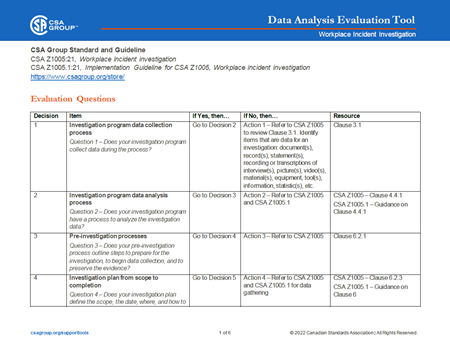
Data Analysis Evaluation
Use these 15 questions to support identifying gaps in an investigation program that could impact the data collection and analysis process.
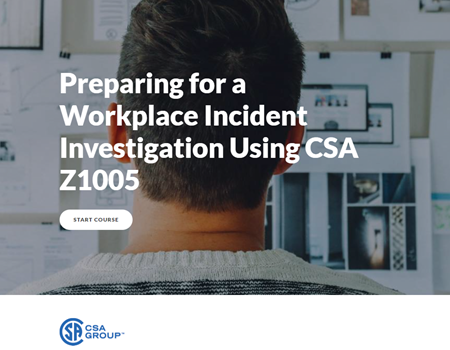
Preparing for a Workplace Incident Investigation
Take this short, self-paced learning on how to prepare for a workplace incident so that data is not lost in the early stages of an investigation.
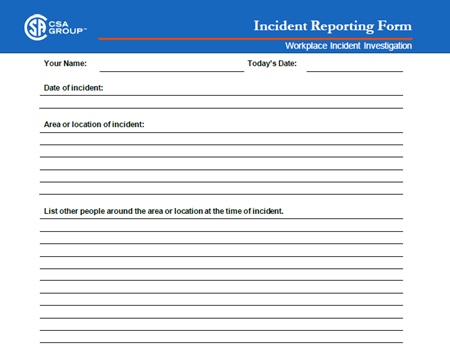
Incident Reporting Form – Printable
Incident investigation teams can use this form to aid in collecting data from anyone who witnessed a workplace incident.

Incident Reporting Form – Electronic
Incident investigation teams can use this form to aid in collecting data from anyone who witnessed a workplace incident.
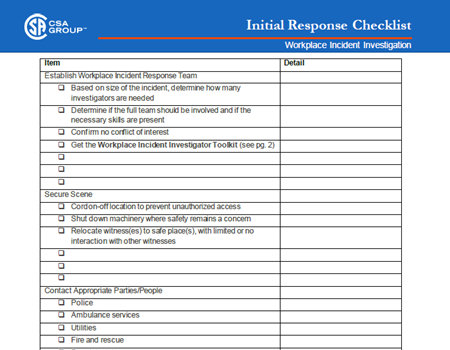
Initial Response Checklist
An incident investigation team can use this at-a-glance checklist to help quickly review and react when a workplace incident occurs.
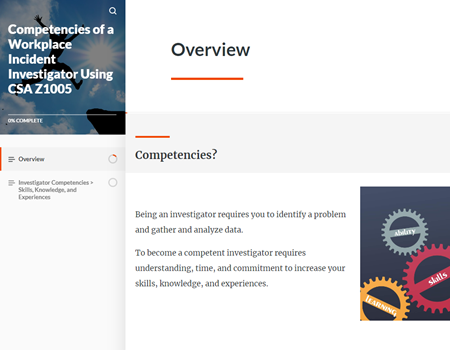
Competencies of a Workplace Incident Investigator
Take this short, self-paced learning to assist in identifying the skills, knowledge, and experience required to be an effective incident investigator.
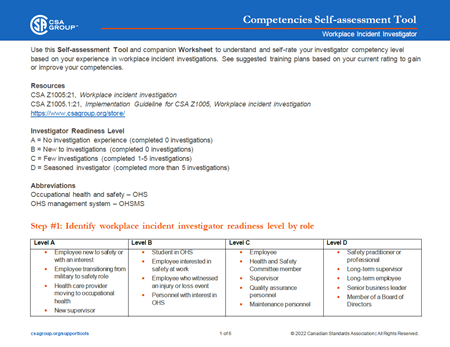
Competencies Self-Assessment Tool
Self-assess your personal investigator competency level based on your experience in workplace incident investigations. Use with the Worksheet.

Competencies Self-Assessment Worksheet
Self-rate your investigator competency skills, knowledge, and experience and see suggested training plans to develop or improve your competencies.
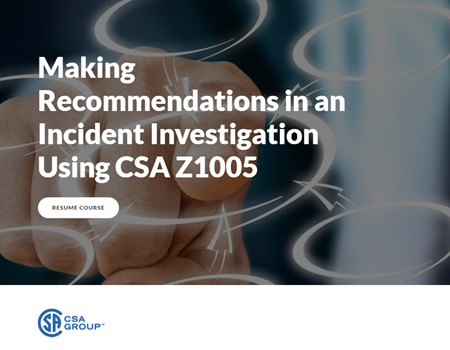
Making Recommendations in an Incident Investigation
Take this short, self-paced learning to help understand how an investigation team can review its processes and procedures for making recommendations.
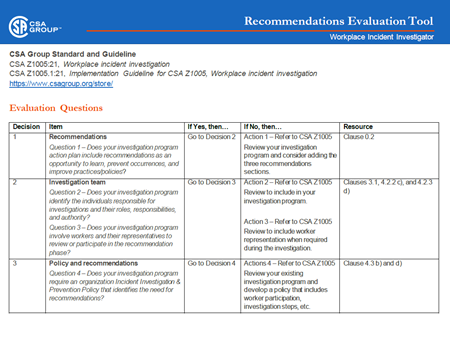
Recommendations Evaluation Tool
Use these 12 questions to assist in identifying gaps in an investigation program’s recommendations phase and to address the gaps using CSA Z1005.
Work Disability Management System (1)
This tool is based on CSA Z1011:20, Work disability management system.
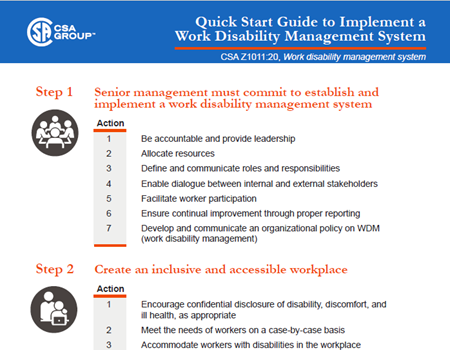
How to Implement a Work Disability Management System
Help your organization implement a work disability management system with this easy step-by-step guide.
Management of Work in Extreme Conditions (4)
These tools are based on CSA Z1010-18, Management of work in extreme conditions.

Recognizing Extreme Work Conditions
Take this short, self-paced learning to help recognize extreme work conditions and escalation factors so that you can plan, manage, and respond to them.
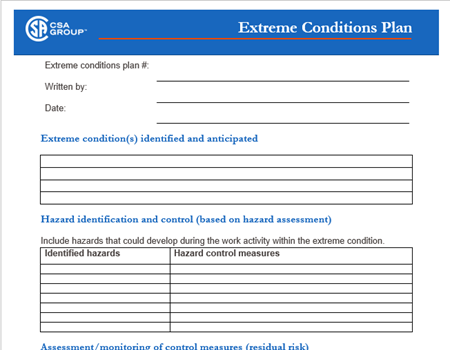
Extreme Conditions Plan Template
Use this editable template to aid in indicating the hazards and control measures for extreme work conditions.
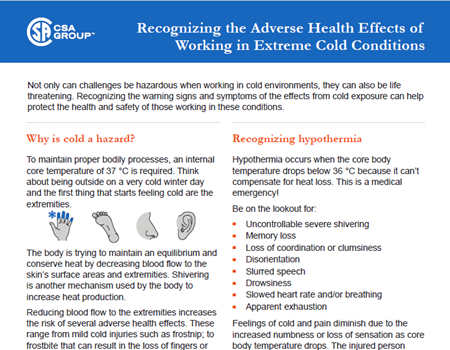
Extreme Cold Conditions Fact Sheet
Learn to recognize and respond to adverse health effects such as hypothermia, or better yet, avoid them altogether.
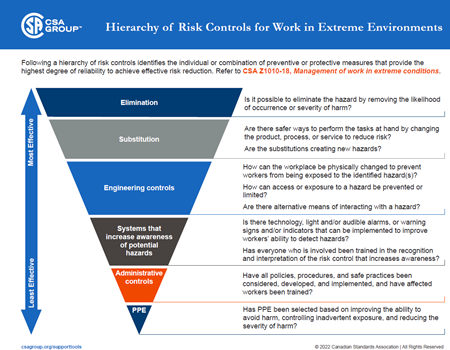
Hierarchy of Risk Controls for Work in Extreme Environments
Consider which controls to use to minimize the risk of working in extreme environments. It is ready to print or be shared virtually.
Management of Impairment in the Workplace (7)
These tools are based on CSA Z1008:21, Management of impairment in the workplace
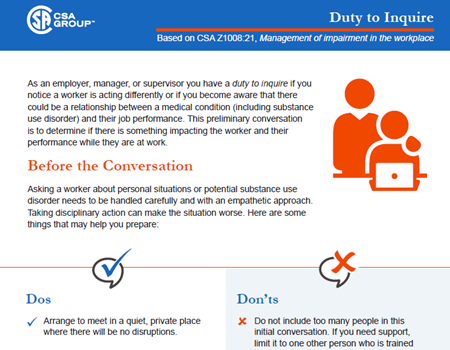
Duty to Inquire
Talking to a worker about potential substance use can be difficult. This tool gives helpful tips to use before and during the conversation.
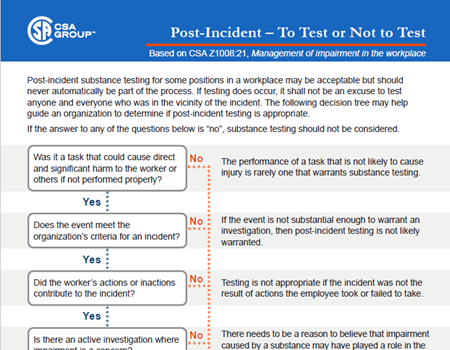
Post Incident Testing
Use this decision tree to help determine when it is appropriate to test for substance use.
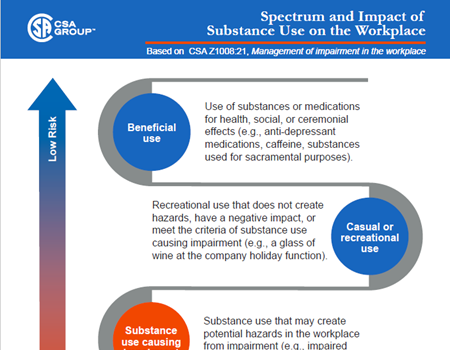
Spectrum of Substance Use
Do you understand the spectrum and impact of substance use? This tool helps demonstrate how substance use fits on a spectrum from low to high risk.
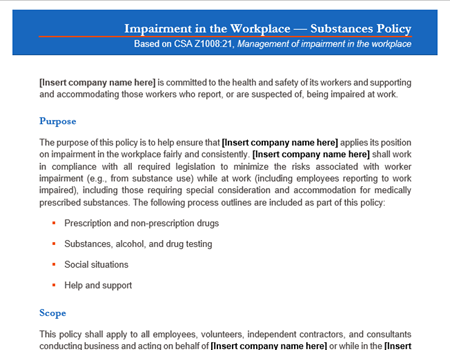
Impairment Policy Template
Need an impairment policy for your workplace? Use this editable template as-is or modify it to suit the needs of your organization.
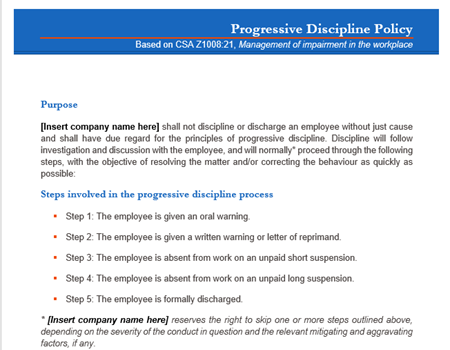
Progressive Discipline Policy Template
Need a progressive discipline policy for your workplace? Use this editable template as-is or modify it to suit the needs of your organization.
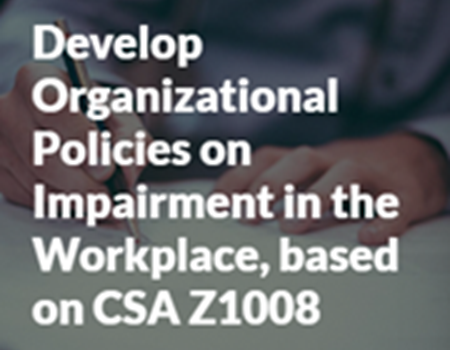
Develop Organizational Policies on Impairment in the Workplace
This short, self-paced learning helps you to identify key information needed in policies related to workplace impairment.

Impact of Impairment on Hazard and Risk
This short, self-paced learning helps you to understand the impact that impairment can have on hazard and risk in the workplace.
Work Disability Management in the Paramedic Service Organization (3)
These tools are based on CSA Z1011.1:22, Work disability management in the paramedic service organization
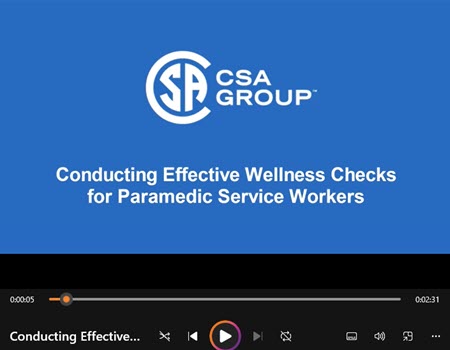
Conducting Effective Wellness Checks
Watch this video to understand key elements to conducting effective wellness checks during a medical leave.
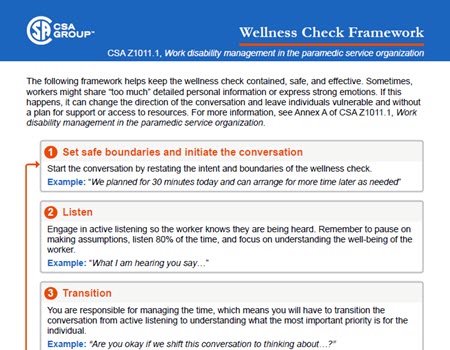
Wellness Check Framework
Use this framework to help keep your wellness checks contained, safe, and effective.
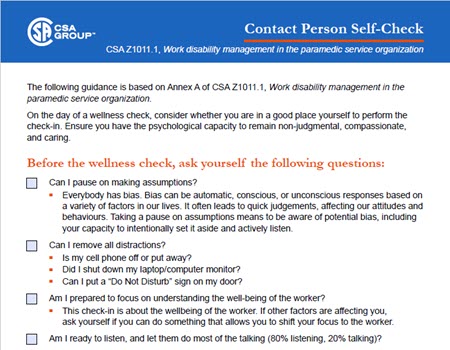
Contact Person Self-Check
Use this checklist to ensure you have the psychological capacity to remain non-judgmental, compassionate, and caring, on the day of a wellness check.
First Responder Fatigue Risk Management System (18)
These tools are based on CSA Z1615:22, First responder fatigue risk management system
Acknowledgement
These resources were supported by Defense Research and Development Canada’s (DRDC) Canadian Safety and Security Program. The views presented in these slides are those of the authors and do not necessarily represent the views of the DRDC. We would like to acknowledge our partners who generously shared their time, experience, and resources for the purpose of this project.
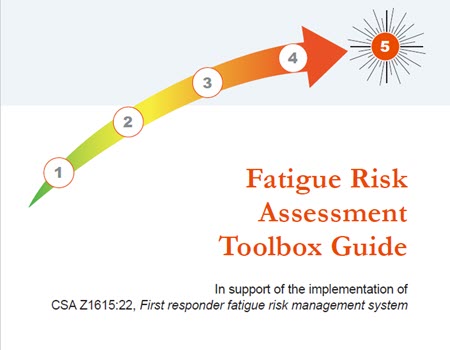
Fatigue Risk Assessment Toolbox Guide How-To
Learn the operational parameters of available tools to appropriately select and implement to help control the risk of fatigue in your organization.
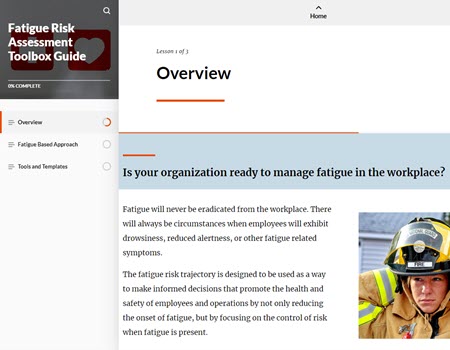
Fatigue Risk Assessment Toolbox Guide
Take this short, self-paced learning to help recognize the five key intervention points in the fatigue risk trajectory to prevent escalation of risk.
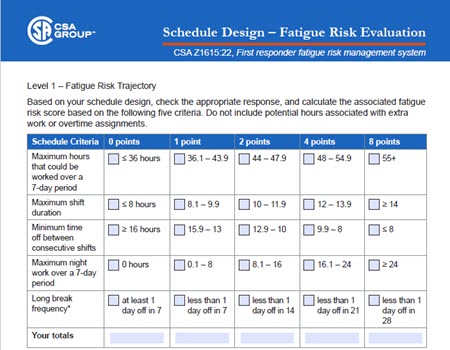
Schedule Design - Fatigue Risk Evaluation
Evaluate the likelihood of a schedule design contributing to fatigue amongst employees.
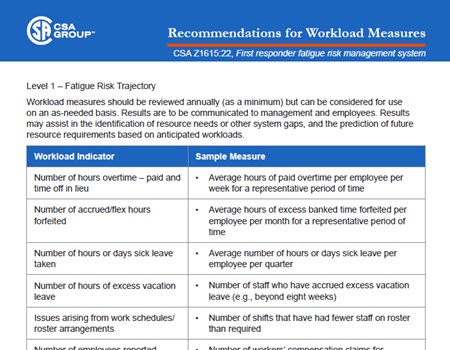
Recommendations for Workload Measures
Assess workload and resource requirements at the organizational level for potential impacts on employee fatigue levels.
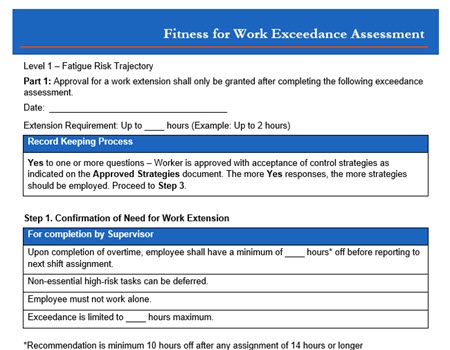
Fitness for Work Exceedance Assessment
To help reduce risk, customize this form to the needs of your agency to assess an employee’s fitness for work status before approving exceedances.
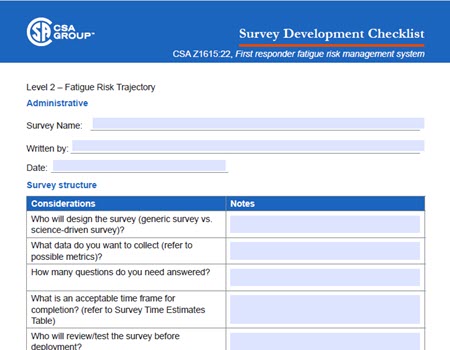
Survey Development Checklist
Use this checklist to develop a sound fatigue risk survey that can be used to inform the direction of education, training, and work structures.
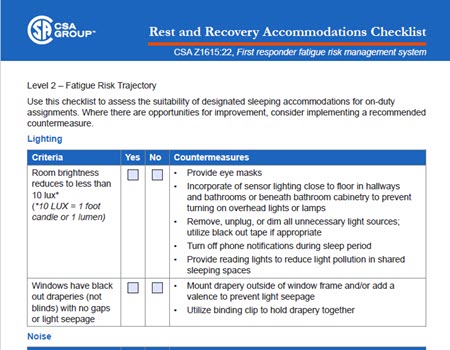
Rest and Recovery Accommodations Checklist
Use this checklist to assess the suitability of worker accommodations for on-duty assignments. Recommended countermeasures are provided.
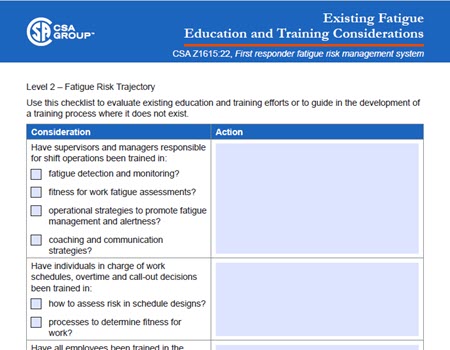
Existing Fatigue Education and Training Considerations
Use this checklist to evaluate existing training efforts or to guide in the development of a training process.
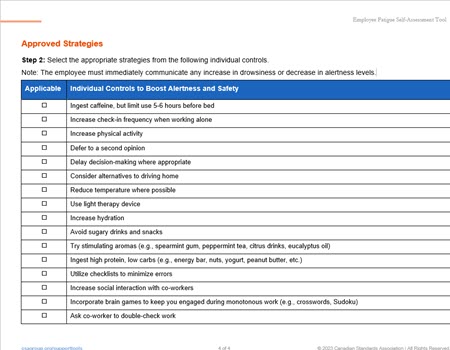
Employee Fatigue Self-assessment
Use this assessment to proactively manage personal levels of fatigue and fitness for duty over the course of an assigned shift to mitigate risk.

Observational Fatigue Behaviour Checklist
Use this checklist to identify fatigue related behaviours of employees and to make informed decisions on how to ensure fit for duty status.
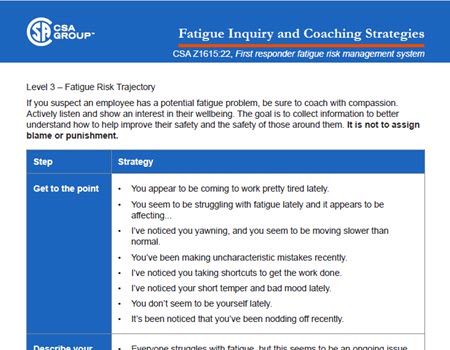
Fatigue Inquiry and Coaching Strategies
Supervisors can use this guidance to facilitate conversations about fatigue to foster positive communications and supportive actions.
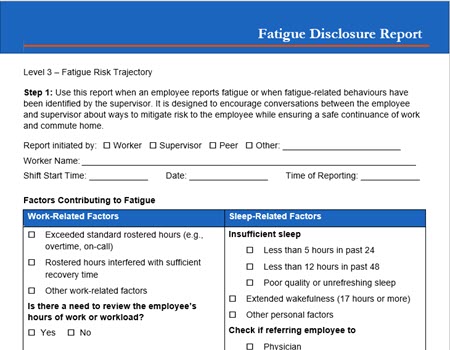
Fatigue Disclosure Report
Use this editable template to report fatigue and to encourage conversations about ways to mitigate risk at work and during the commute home.
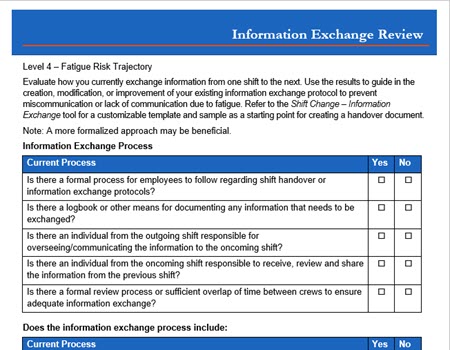
Information Exchange Review
Customize this form to evaluate the effectiveness of information being exchanged to see how to create or enhance your shift handover protocol.
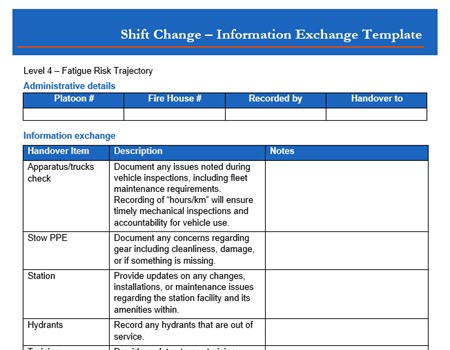
Shift Change – Information Exchange
Create or improve your information exchange protocol with the help of this customizable handover document and sample.

Performance Impairment Checklist
When fatigue is suspected as a contributing factor to an event, use this checklist to determine strategic ways to error-proof the identified task.
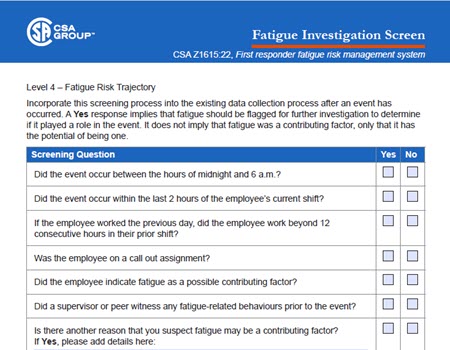
Fatigue Investigation Screen
Use these questions to determine if fatigue related factors should be investigated after an event has occurred.
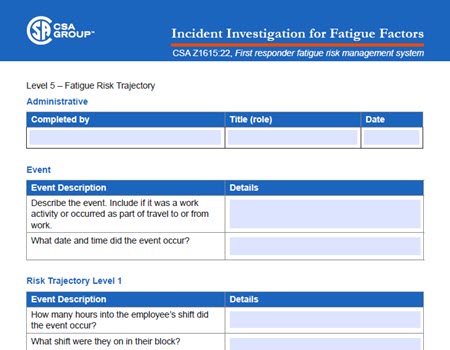
Incident Investigation for Fatigue Factors
Investigative teams can use this report to help identify if fatigue-related factors were present and contributed to an incident or event.
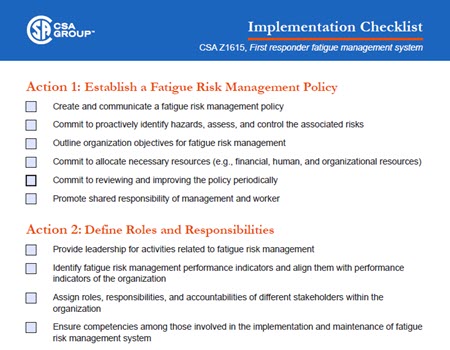
Implementation Checklist
Help your organization implement a fatigue risk management system using this step-by-step checklist.

